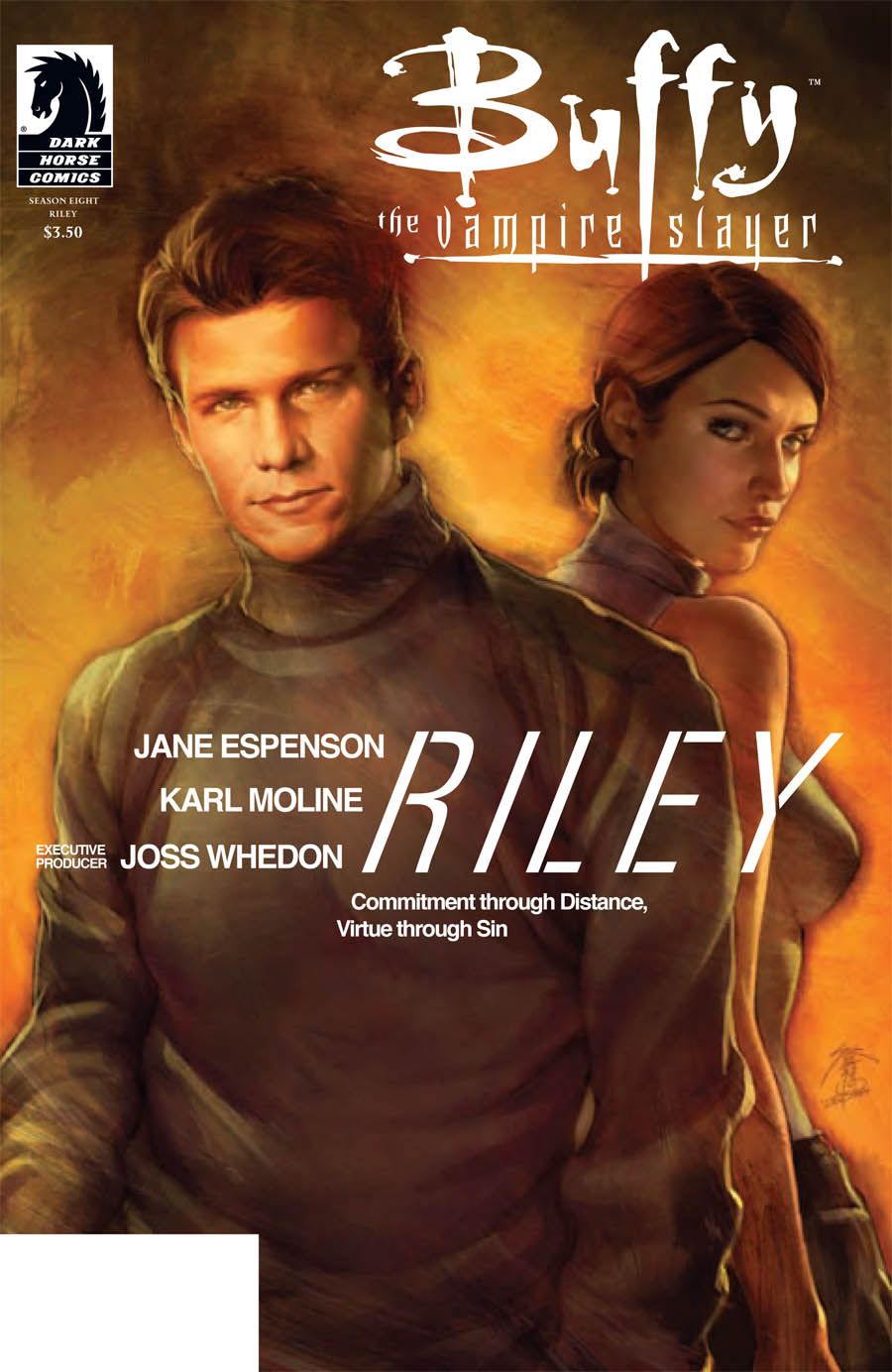First, the bad news. There really isn't much plot in "Buffy the Vampire Slayer: Riley," the one-shot that promised to show how Riley Finn became a double agent pretending to work for Angel/Twilight while really infiltrating the group for Buffy Summers. In fact, that's almost the entire plot, and by that I mean it reveals just about nothing that we didn't already know. (The sole exception doesn't even feel like that major a piece of information, but why ruin the one interesting thing about the entire one-shot's plot in this review? I'm not that cruel.)
Now, the good news. Jane Espenson did the impossible, here. She made me like Riley, and more importantly feel that the relationship between Riley and his wife Sam comes across as natural and fun. As the two chat while going on a mission, we get a sense of a real rapport between them; they're on the same page for most things in life, and they work well together. Sam was little more than a face in her one appearance on the show before, but here I can buy Riley and Sam as being together, and I'd actually want to see the pair of them again in another "Buffy the Vampire Slayer" comic. Considering Riley was probably the least interesting character to appear in the opening credits of the series, that says something.
It helps matters that Karl Moline and Andy Owens have a much stronger showing than in their latest "Buffy the Vampire Slayer" comic a couple of years ago. Moline's pencils are crisp and attractive, a reminder that he's got a strong eye for characters even when the actual action in the comic doesn't give him much to work with. Moline is never given a chance to show off his trademark energy with having characters fly or bounce across the page, and that's a shame, but there's still a natural, relaxed look to the figures as they stand around that works well.
In terms of story, "Buffy the Vampire Slayer: Riley" is a bit dull. Actually, "a bit" is a slight understatement. I think we were all hoping for a little more meat to the story than what we got here. But still, the art is nice, and Espenson's dialogue succeeds where the plot itself fails. As part of a collection of issues, this will come across much better than it does as a singular one-shot. This could have been a lot better, but on the bright side, it also could have been much worse.

